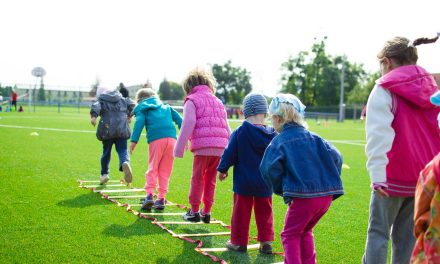HALO Director Dr. Mark Tremblay, recent PhD grad Dr. Salomé Aubert and HALO alumna Stephanie Carson are among the authors on a paper, “Comparing and assessing physical activity guidelines for children and adolescents: a systematic literature review and analysis,” that was just published in the International Journal of Behavioral Nutrition and Physical Activity.
In summary, the authors found considerable variability between national/international physical activity guideline quality, development and recommendations, highlighting the need for rigorous and transparent guideline development methodologies to ensure appropriate guidance for population-based approaches. Where countries do not have the resources to ensure this level of quality, the adoption or adolopment (framework to review and update guidelines) of the WHO guidelines or guidelines of similar quality is recommended. Canada had the highest rated guidelines in the world (even higher than WHO) and they were led by HALO!
Citation details and an abstract of the paper are below.
Parrish, A., Tremblay, M.S., Carson, S. et al. Comparing and assessing physical activity guidelines for children and adolescents: a systematic literature review and analysis. Int J Behav Nutr Phys Act 17, 16 (2020). https://doi.org/10.1186/s12966-020-0914-2.
Abstract
Background. The impact of declining physical activity and increased sedentary behaviour in children and adolescents globally prompted the development of national and international physical activity guidelines. This research aims to systematically identify and compare national and international physical activity guidelines for children and adolescents and appraise the quality of the guidelines to promote best practice in guideline development. Methods. This systematic review was registered in the International Prospective Register of Systematic Reviews (PROSPERO) and reported using the Preferred Reporting Items for Systematic Reviews and Meta-Analysis (PRISMA) guidelines. Only national, or international physical activity and/or sedentary behaviour guidelines were included in the review. Included guidelines targeted children and adolescents aged between 5 and 18 years. A grey literature search was undertaken incorporating electronic databases, custom Google search engines, targeted websites and international expert consultation. Guideline quality was assessed using the Appraisal of Guidelines for Research and Evaluation II Instrument (AGREE II). Results. The search resulted in 50 national or international guidelines being identified. Twenty-five countries had a national guideline and there were three international guidelines (European Union, Nordic countries (used by Iceland, Norway and Sweden), World Health Organization (WHO)). Nineteen countries and the European Union adopted the WHO guidelines. Guidelines varied in relation to date of release (2008 to 2019), targeted age group, and guideline wording regarding: type, amount, duration, intensity, frequency and total amount of physical activity. Twenty-two countries included sedentary behaviour within the guidelines and three included sleep. Total scores for all domains of the AGREE II assessment for each guideline indicated considerable variability in guideline quality ranging from 25.8 to 95.3%, with similar variability in the six individual domains. Rigorous guideline development is essential to ensure appropriate guidance for population level initiatives. Conclusions. This review revealed considerable variability between national/international physical activity guideline quality, development and recommendations, highlighting the need for rigorous and transparent guideline development methodologies to ensure appropriate guidance for population-based approaches. Where countries do not have the resources to ensure this level of quality, the adoption or adolopment (framework to review and update guidelines) of the WHO guidelines or guidelines of similar quality is recommended.
Click here to read the paper for free.




